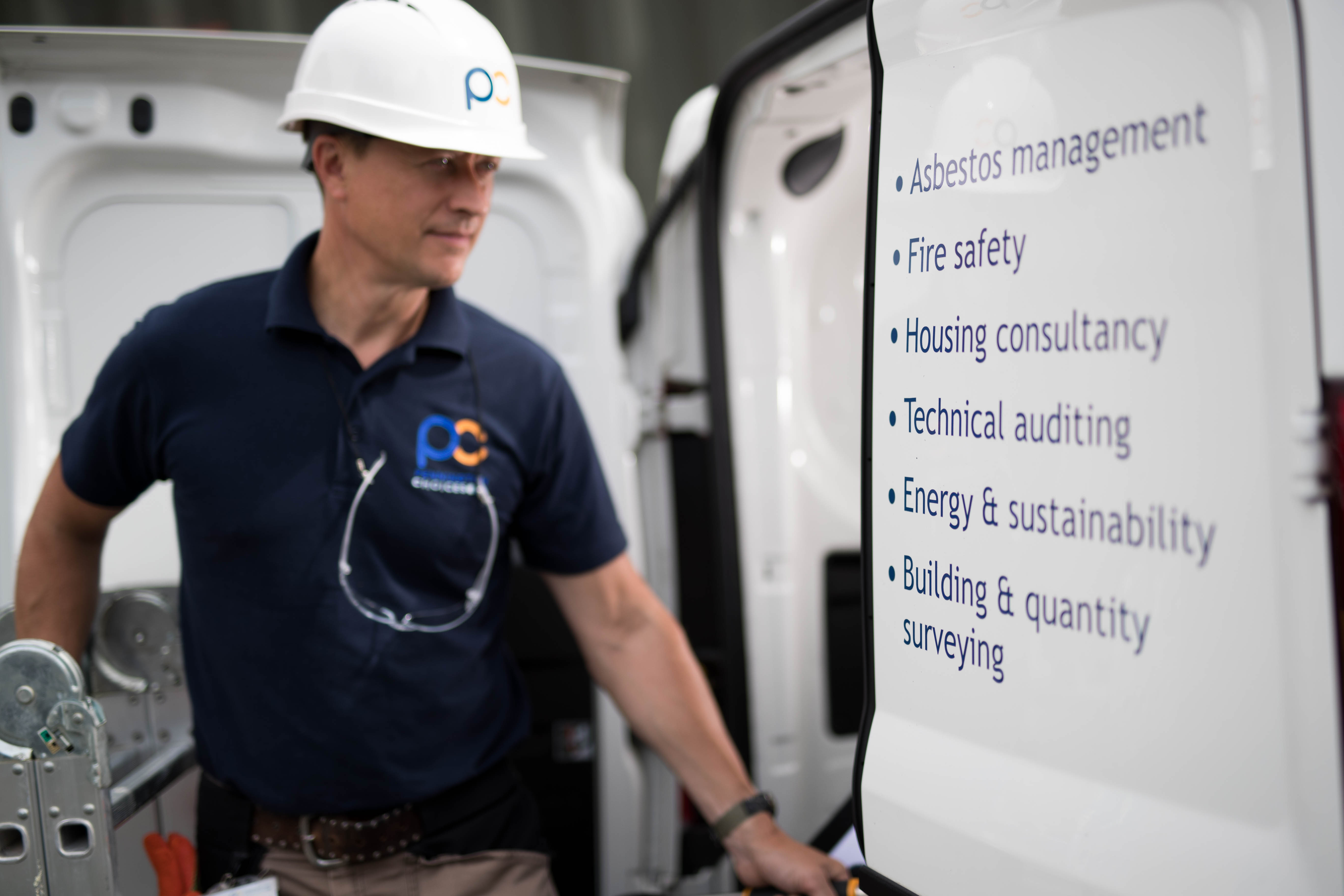Sign up to our newsletter
Many organisations are now familiar with their responsibilities under the Control of Asbestos Regulations 2012 (CAR 2012). These regulations mandate Asbestos Management Surveys and routine re-inspections to ensure the safety of buildings. However, beyond basic compliance, there is often a lack of awareness around the broader responsibilities, particularly in relation to fire safety, damp and mould, and retrofit projects. These activities can involve disturbing areas of a building that may contain asbestos, which is why proactive asbestos management is essential.
To access in-depth insights into asbestos management outside of your regular programme, catch up on our recent webinar, ‘Asbestos Awareness: Key requirements and best practices’, available on-demand now.
The Limitations of Asbestos Management Surveys
Asbestos Management Surveys only assess the places that are accessible during normal occupation or any foreseeable maintenance. Whilst these surveys are important, they may not identify Asbestos-Containing Materials (ACMs) concealed in places not inspected. This poses significant risks during intrusive works, such as Fire Risk Assessments (FRAs) or planned refurbishment upgrades that are likely to disturb the fabric of the building. In these cases, a more detailed Asbestos Survey is necessary to ensure safety and compliance.
Fire Safety
Under the CAR 2012, Regulation 5 specifies that you must identify the presence of asbestos before any work that may risk disturbing it commences. This is particularly relevant when it comes to fire safety. Intrusive fire safety surveys, such as Type 4 FRAs or Compartmentation Surveys, should be preceded by an Asbestos Refurbishment Survey. If the FRA then identifies remedial works that could also disrupt the building’s fabric, another Asbestos Survey may be necessary to evaluate the areas impacted.
Historically, asbestos was widely used in construction due to its fire-resistant properties, particularly from the 1960s to the 1980s. Its purpose was to prevent the spread of fire and smoke through buildings; however, many of these materials are now 40-60 years old, making regular re-inspections vital to maintaining adequate fire compartmentation. To meet fire and building safety regulations, building owners must ensure that any asbestos-related risks are managed, especially in higher-risk buildings. Asbestos risks should be addressed through proper policies, procedures, and, if needed, included in the building safety case report.
For more expert insight into maintaining fire compartmentation, head over to our dedicated blog, ‘What Every Building Owner Should Know About Fire Compartmentation.’
When planning any work on a building, it’s essential to consider asbestos from the start. It must be managed carefully, either by removing it, overboarding it, or continuing to monitor it throughout the project. The goal, as always, is to minimise the risk as much as reasonably practicable. By accounting for asbestos early in the planning process, you not only protect the safety of everyone involved but also ensure compliance with regulatory requirements. This proactive approach ensures that all stakeholders are aware of potential ACMs and can take the necessary precautions before work begins.
Damp and Mould
Addressing damp and mould issues often requires intrusive and immediate remediation work. However, in the rush to rectify issues like condensation, leaks, or poor ventilation, organisations sometimes overlook the need to consider asbestos. For example, removing plaster or replacing windows without conducting an Asbestos Survey can disturb ACMs, leading to additional risks.
Damp and mould remediation is becoming increasingly common in the housing sector, especially as organisations respond to growing concerns about indoor air quality and upcoming legislative changes, such as the implementation of Awaab’s Law and the review of the HHSRS and Decent Homes Standard. Before starting any damp and mould remediation, asbestos must be considered. An Asbestos Survey should be carried out in affected areas to avoid the risk of exposure. Integrating asbestos management into your damp and mould control plan is essential for both safety and compliance.
Worried about damp and mould hazards in your buildings? Discover how to keep your buildings and tenants safe from damp and mould with our FREE Landlord’s Guide to Damp, Mould and Condensation.
Renovations and Retrofit Projects
Renovations as part of retrofit projects often require significant structural changes, which can unknowingly disturb existing ACMs in the fabric of the building. Whether you're upgrading an old building, adding new features, or making structural alterations to improve energy efficiency, asbestos management is critical.
Retrofit projects, designed to modernise older buildings, must include asbestos management to comply with safety requirements, such as those under the Housing Health and Safety Rating System (HHSRS). Incorporating Asbestos Surveys into the planning phase will ensure that your renovation project remains safe and legally compliant.
For more insights into undertaking a successful and compliant retrofit project, download our FREE Housing Provider's Guide to a Successful Retrofit Project.
If you need further guidance on asbestos management outside of your regular programme or have specific questions about incorporating Asbestos Surveys into the planning process of intrusive building work, our team is here to help. Get in touch to ensure your building remains safe, compliant, and asbestos-free.





